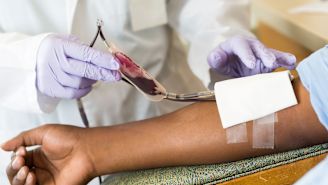Long-chain fatty acid oxidation disorders (LC-FAODs) are rare metabolic disorders that prevent the body from metabolizing long-chain fatty acids, an important energy source that is found in many different foods, including fish, meat, eggs, dairy, seeds, and nuts. Most people with a LC-FAOD are diagnosed as newborns, but for others, the disease appears later.
Here, we look at some of the symptoms and complications that can result when a person has LC-FAOD.
How LC-FOADs affect the body
Metabolism is the process of converting the food a person ingests into energy. The metabolic process is complex, but the basic idea is that food is broken down into energy molecules that can be transported to cells and used by those cells for energy.
When a person has a LC-FAOD, the body is unable to complete the process of breaking down and converting long-chain fatty acids. As a result, organs and systems throughout the body may not have enough available energy.
Another effect of incomplete metabolism is the buildup of fatty acid intermediates. Fatty acid intermediates are substances that are produced as long-chain fatty acids are metabolized. When the metabolic process is incomplete, these fatty acid intermediates can accumulate in the blood and organs—and if the levels become high enough, it can be toxic to the body.
Symptoms and complications
LC-FAODs can impact many parts of the body and cause a number of symptoms and complications, some of which can be life-threatening. These include:
- Chronic energy deficiency.
- Muscle weakness, muscle atrophy, muscle pain, and exercise intolerance.
- Rhabdomyolysis, a breakdown of muscle tissue that releases proteins into the bloodstream and can cause damage to the kidneys. This may be induced by exercise, fasting, or illness.
- Neurological complications, including developmental delays and peripheral neuropathy—nerve damage to the extremities that can cause pain, tingling, numbness, and other sensations.
- Nausea, lack of appetite, cramping, and other gastrointestinal symptoms.
- Vision loss, including impaired ability to see colors and see in low light, and retinopathy (damage to the blood vessels that supply the eye).
- Structural changes to the heart that make it more difficult for the heart to pump blood (called cardiomyopathy). This can lead to irregular heartbeat, heart failure, and in some cases, sudden death.
- Liver dysfunction, including chronic liver disease, enlargement of the liver, and elevated liver enzymes.
- Hyperammonemia (high levels of ammonia in the body) which can cause seizures, coma, and death.
- Acidosis, a buildup of acid in the body.
- Hypoglycemia (very low blood sugar) and hypoketotic hypoglycemia (a combination of low blood sugar and low levels of ketones, which are byproduct of fat metabolism and are another energy source for cells).
Keep in mind that LC-FAODs are a different experience for every person—there are multiple types of LC-FAODs (as well as disorders that affect the metabolism of other fatty acids), and disorders can vary in severity and symptoms.
It is important to talk to you or your family’s healthcare provider about symptoms to watch for, preventing acute episodes of symptoms, and how to seek treatment if an acute episode occurs.





